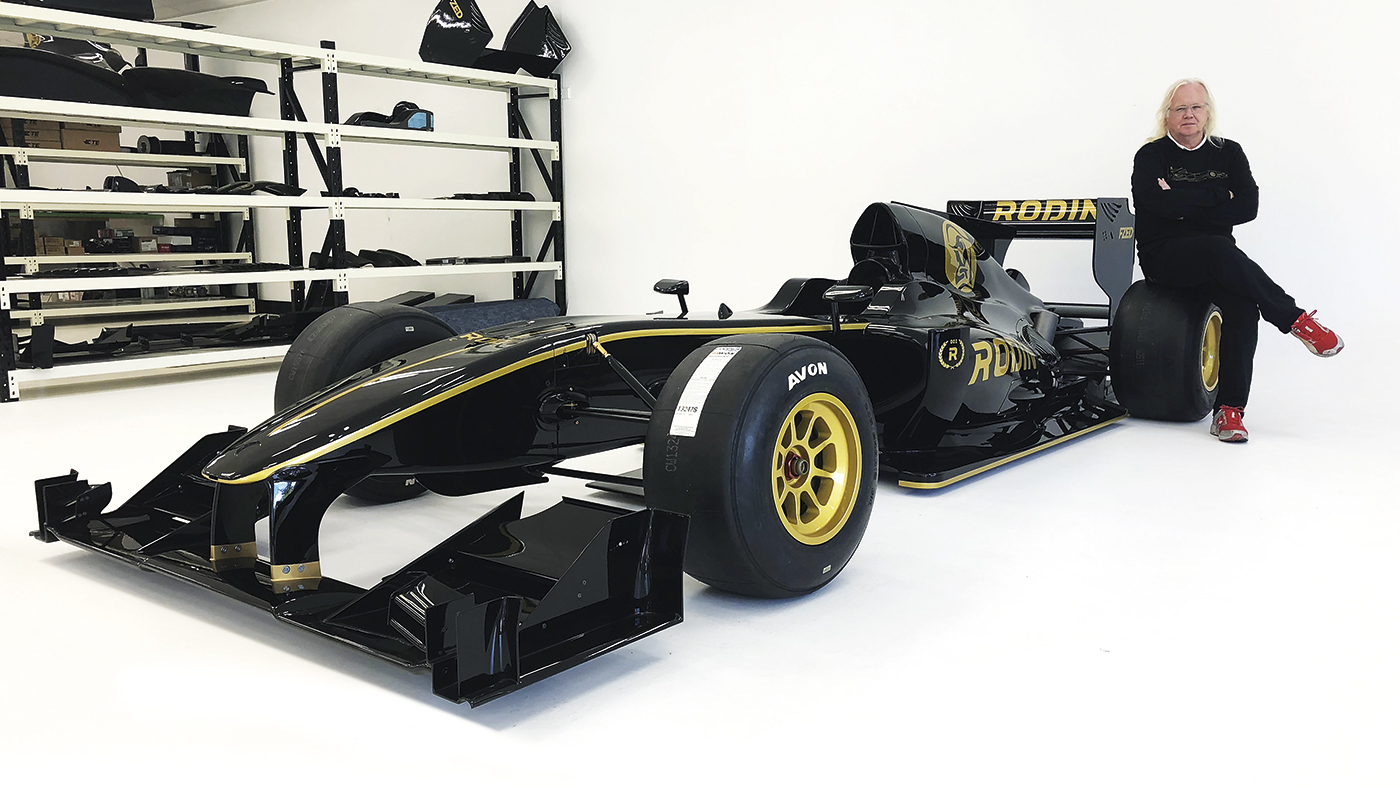As Volkswagen recently demonstrated, 3D printing is about to hit the automotive sector in a big way, if it truly is able to integrate 3D printed parts into its upcoming T-Roc convertible. In the meantime, the technology is continuing to impact the specialty car market, from racers to luxury vehicles. The latest is a first-of-its-kind, 3D printed gearbox for the Rodin FZero hypercar.
New Zealand-based bespoke vehicle maker Rodin Cars focuses on creating custom, single-seat, open-wheel high-performance automobiles that are meant to be even faster than Formula 1 racers. Now, for its Rodin FZero hypercar, the company designed an eight-speed sequential gearbox with hydraulically controlled differential. Due to its unique design, the gearbox could only be made with 3D printing.

The Rodin Cars bespoke gearbox, uniquely designed specifically for manufacturing using state-of-the-art metal 3D printing technology. (Image courtesy of Rodin Cars)
Typically, a gearbox is cast from magnesium or CNC machined from a billet of material. As those familiar with 3D printing well know, additive manufacturing (AM) is capable of producing parts than these traditional techniques. Moreover, it’s possible to integrate optimized physical properties into a 3D printed part that just aren’t possible with casting and machining. In the case of the FZero gearbox, conventional fabrication techniques would result in a part that would be too heavy to race or even survive the extreme environment of high-speed racing.
In turn, Rodin turned to a previous design partner, UK-based engineering firm Ricardo. Over the course of a year-and-a-half, the two designed the eight-speed gearbox. Made up of complex inner channels, as well as thin-wall bearing and mount structures, the piece had to be produced via 3D printing. To make the design a reality, the team worked with 3D Systems’ Application Innovation Group (AIG) in Littleton, Colorado, and Leuven, Belgium.
Weighing only 68 kilograms, the resulting gearbox included walls that were just 2mm thick. To produce a large enough component with the necessary detail, the part was 3D printed on the 3D Systems’ DMP Factory 500 in Leuven. The metal 3D printer features a build volume of 500 mm x 500 mm x 500 mm and a low O2 content, making it possible to produce parts with high surface quality and material properties.

An 8 speed sequential, 68kg, additively manufactured from grade 23 titanium; the Rodin Cars gearbox is designed to set a new standard in automotive manufacturing. (Image courtesy of Rodin Cars)
Now that the unit has been 3D printed, Rodin Cars has had its own DMP Factory 500 installed at its site in New Zealand. The bespoke auto manufacturer will use the machine to 3D print the gearbox for the FZero, as well as other custom parts for upcoming vehicles. 3D Systems was a natural partner for Rodin, as the firm already uses its selective laser sintering to produce end parts and stereolithography to 3D print tooling for carbon fiber components.
“3D printing allows us to design and create components otherwise unachievable using traditional methods of manufacturing,” said David Dicker, founder, Rodin Cars. “With the Rodin FZERO gearbox, we had specific criteria we wanted to meet in terms of weight and durability. Because of the size and quality required for such a large component, it was only possible to print it on 3D Systems’ DMP Factory 500 machine. We couldn’t source another AM supplier who was able to offer a similar solution for our needs – the print quality, volume capacity, testing facilities in Leuven, and continued technological support.”
3D printing has regularly proven itself to be a perfect tool for the specialty vehicle market, which demands high-performance parts at low quantities. AM is the only technology capable of producing one-off, complex components in a cost-effective manner compared to other technologies. For this reason, we see established racing and luxury firms, like Alfa Romeo and McLaren, as well as up-and-comers like Czinger, whose hypercar concept is heavily reliant on 3D printing.
Subscribe to Our Email Newsletter
Stay up-to-date on all the latest news from the 3D printing industry and receive information and offers from third party vendors.
You May Also Like
Gorilla Sports GE’s First 3D Printed Titanium Cast
How do you help a gorilla with a broken arm? Sounds like the start of a bad joke a zookeeper might tell, but it’s an actual dilemma recently faced by...
Nylon 3D Printed Parts Made More Functional with Coatings & Colors
Parts 3D printed from polyamide (PA, Nylon) 12 using powder bed fusion (PBF) are a mainstay in the additive manufacturing (AM) industry. While post-finishing processes have improved the porosity of...
$25M to Back Sintavia’s Largest Expansion of Metal 3D Printing Capacity Since 2019
Sintavia, the digital manufacturing company specializing in mission-critical parts for strategic sectors, announced a $25 million investment to increase its production capacity, the largest expansion to its operations since 2019....
Velo3D Initiates Public Offering in a Bid to Strengthen Financial Foundations and Drive Future Growth
Velo3D (NYSE: VLD) has been among a number of publicly traded 3D printing firms that have attempted to weather the current macroeconomic climate. After posting a challenging financial report for 2023,...
































